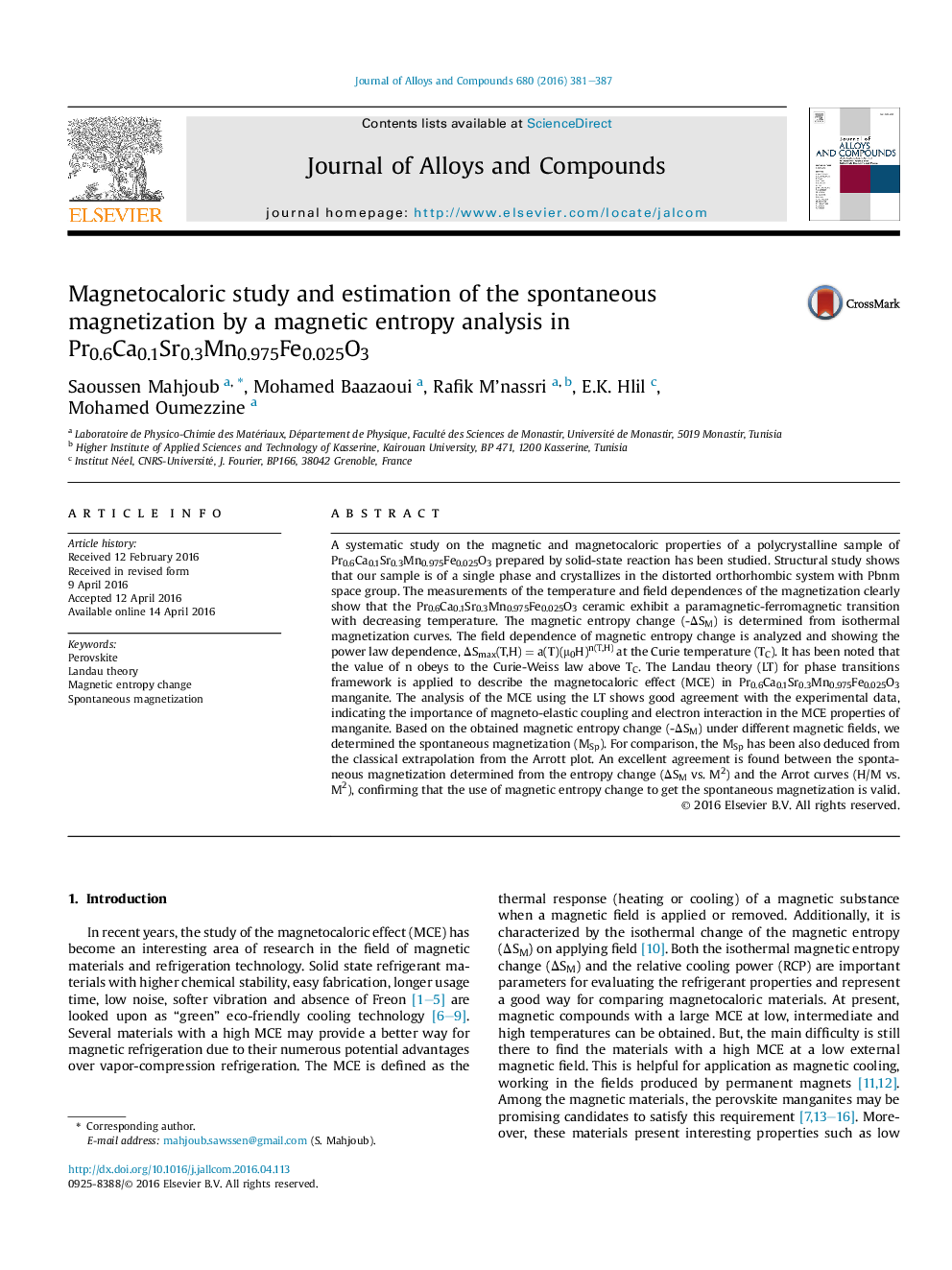| Article ID | Journal | Published Year | Pages | File Type |
|---|---|---|---|---|
| 1605372 | Journal of Alloys and Compounds | 2016 | 7 Pages |
Abstract
A systematic study on the magnetic and magnetocaloric properties of a polycrystalline sample of Pr0.6Ca0.1Sr0.3Mn0.975Fe0.025O3 prepared by solid-state reaction has been studied. Structural study shows that our sample is of a single phase and crystallizes in the distorted orthorhombic system with Pbnm space group. The measurements of the temperature and field dependences of the magnetization clearly show that the Pr0.6Ca0.1Sr0.3Mn0.975Fe0.025O3 ceramic exhibit a paramagnetic-ferromagnetic transition with decreasing temperature. The magnetic entropy change (-ÎSM) is determined from isothermal magnetization curves. The field dependence of magnetic entropy change is analyzed and showing the power law dependence, ÎSmax(T,H) = a(T)(μ0H)n(T,H) at the Curie temperature (TC). It has been noted that the value of n obeys to the Curie-Weiss law above TC. The Landau theory (LT) for phase transitions framework is applied to describe the magnetocaloric effect (MCE) in Pr0.6Ca0.1Sr0.3Mn0.975Fe0.025O3 manganite. The analysis of the MCE using the LT shows good agreement with the experimental data, indicating the importance of magneto-elastic coupling and electron interaction in the MCE properties of manganite. Based on the obtained magnetic entropy change (-ÎSM) under different magnetic fields, we determined the spontaneous magnetization (MSp). For comparison, the MSp has been also deduced from the classical extrapolation from the Arrott plot. An excellent agreement is found between the spontaneous magnetization determined from the entropy change (ÎSM vs. M2) and the Arrot curves (H/M vs. M2), confirming that the use of magnetic entropy change to get the spontaneous magnetization is valid.
Related Topics
Physical Sciences and Engineering
Materials Science
Metals and Alloys
Authors
Saoussen Mahjoub, Mohamed Baazaoui, Rafik M'nassri, E.K. Hlil, Mohamed Oumezzine,
